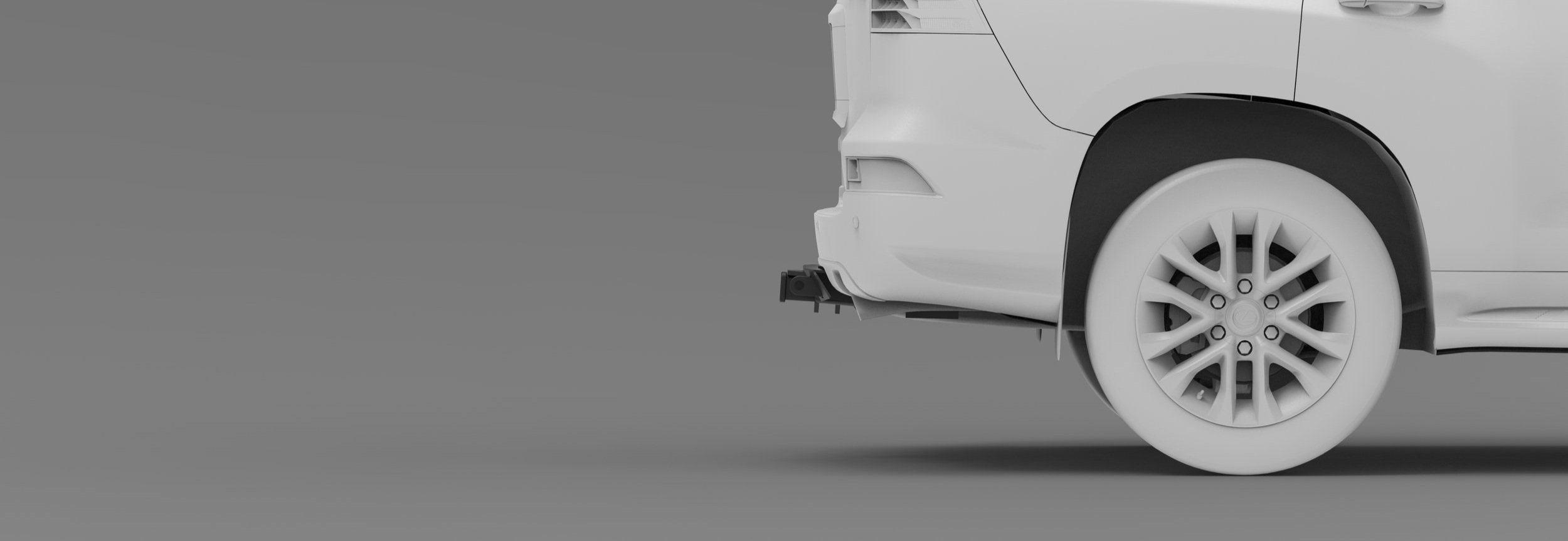
2010-2023 GX460 Rear Tow Hitch Receiver Installation Guide
Before the installation, remove the factory backup tire. Please refer to your owners manual for instructions.
Remove the factory rear lower valance. It is held together with 4 white nylon clips, 4 black 10 mm bolts as shown in the picture above.
If you have a 2010-2013 model year GX460 or if you have purchased the Tow Hitch without the Hybrid Bumper, skip this step.
Now, remove the 10 mm black bolt holding the rear bumper to the driver side rear bumper bracket.
Then, remove the two 12 mm bolts holding the bracket to the frame.
Next, pinch the top of the plug that connects to the trailer 4 pin/7 pin connector, in order to remove the wiring harness.
Remove the connector housing from the metal plate. It is held on with two metal clips as shown in the pictures above.
Then, remove two 12 mm bolts that hold the metal plate to the frame. You will need to relocate the trailer 4 pin/7 pin connector housing in a later step.
Reinstall the two 12 mm bolts back onto the frame to prevent rust, and then reinstalling the bumper bracket.
Now, remove the two 17 mm bolts in order to remove the tow hook on the driver side.
You won’t be needing the factory tow hook anymore, as our NYTOP Tow Hitch Receiver offers alternative recovery points.
For the Tow Hitch without Hybrid Bumper, install the NYTOP Tow Hitch Receiver with spacer plates and four M12-1.25x45 mm and four M12-1.25x50 mm bolts (with one washer on each bolt) as shown in the picture above. Torque all eight bolts down to 75 ft-lbs./101 Nm.
For the Tow Hitch with Hybrid Bumper, install the NYTOP Tow Hitch Receiver and four M12-1.25x35 mm and four M12-1.25x40 mm bolts (with one washer on each bolt) as shown in the picture above. Torque all eight bolts down to 75 ft-lbs./101 Nm.
You will need ratchet extensions in order to install the passenger side bolts without removing the exhaust. Otherwise, you may have to remove one of the exhaust hangers to move the exhaust muffler out of the way.
NOTE: Product installed on the vehicle in picture is a 3D printed plastic prototype of the Rear Tow Hitch with Hybrid Bumper.
Finally, reinstall the trailer 4 pin/ 7 pin connector housing onto the new plate included on our Tow Hitch Receiver.
NOTE: You will have to lengthen the wiring before reconnecting it. Follow Figures 2-1 to 2-7 and 5-1 to 5-2 from the official Lexus tow hitch instruction guide below on how to do so.
NOTE: All work in the following steps on the wire harness is done in place on the vehicle. The harness remains connected to the frame.
(a) Carefully remove the tape covering the strain relief mesh and the (2) corrugated tubes (Fig. 2-1).
(b) Pull back the mesh to expose the extra length of wiring wrapped underneath. Remove the tape holding the wiring together (Fig. 2-2).
(c) After removing the tape, unfold and straighten out the extra wiring (Fig. 2-3).
(d) Use the corrugated, slit tubing provided in the component kit to cover the exposed length of wiring. Begin at one end and continue along the length to the opposite end. Be sure that the mesh netting and the (2) smaller tubes are captured underneath the slit tubing (Fig. 2-4).
(e) Use electrical tape to secure each end of the slit corrugated tubing to the wire harness. Add a few loops around the center of the tube (Fig. 2-5).
(f) Use a standard head (not push mount) cable tie to secure each of the ends of the wrapped tape.
NOTE: Do not install the cable tie so tight that the corrugated tubing starts to squeeze and collapse (Fig. 2-6).
(g) Trim off the ends of the cable ties (Fig. 2-7).
(h) Plug the wire harness pigtail back into the connector plug housing (Fig. 5-1).
(i) Wrap a push-mount head cable tie around the wire harness tubing and install the push mount into the slot in the frame cross member to secure it (Fig. 5-2).
After reinstalling your backup tire, you will be all done! Enjoy your full 6,500 lbs of towing capacity!


























